Strange rituals, superstitions and things that go bump in the night – mysterious England has more than its fair share of them all. Take a look at our top picks and try your hand at solving some of our country’s most ancient riddles.
And, if you’re curious to experience mysterious England for yourself, why not take a look at our range of self-catering holiday cottages? Strangely enough, you can find your perfect pad within easy reach of these extraordinary sites. Just resist the temptation to invite a mystery guest!
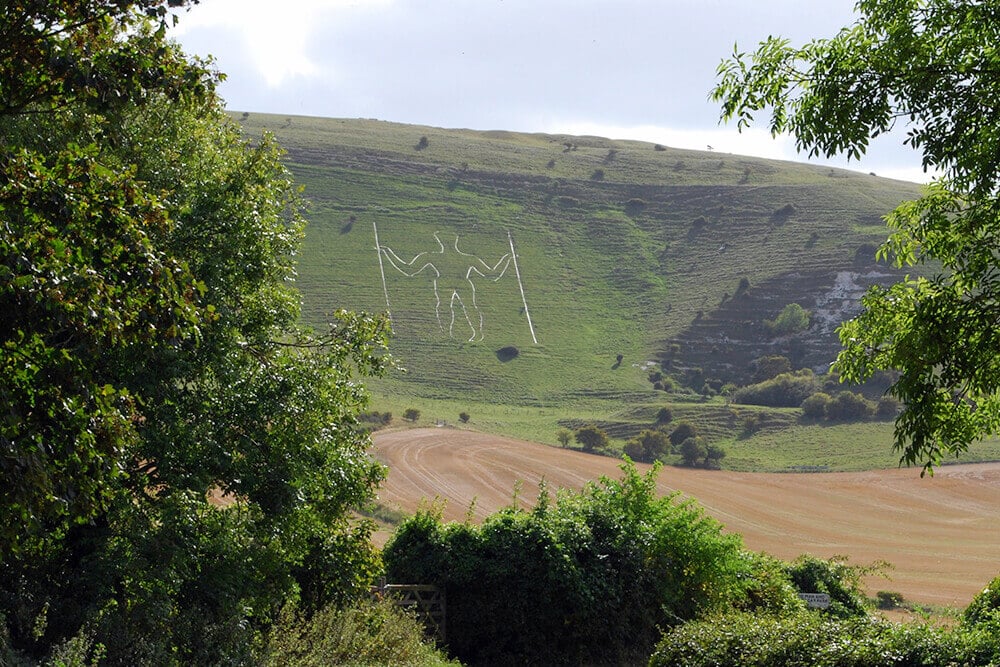
The Long Man of Wilmington by Dave_S.
The most mysterious man in Britain is to be found on a hillside near the seaside resort of Eastbourne. He is a muscular looking fellow, with his arms spread wide, and in each hand he grasps a pole as tall as himself.
That makes the poles 230ft long. For the Long Man of Wilmington – a towering figure cut into the chalk face of the South Downs – is not only a mystery man; he is also the largest representation of a human figure anywhere in Europe, and probably the world.
Nobody knows who created this giant, let alone who he is supposed to be. Is he a Bronze Age figure, or a more recent representation of the war god Odin? Is he a message from space, or a medieval joke carved by the monks of a nearby priory?
“The first written mention of him is in a document dated 1710, so while he might be anything up to 3,000 years old he might equally have been put on his hillside in 1709” says the Sussex Archaeological Society, which owns and cares for the Long Man. “We just don’t know.”
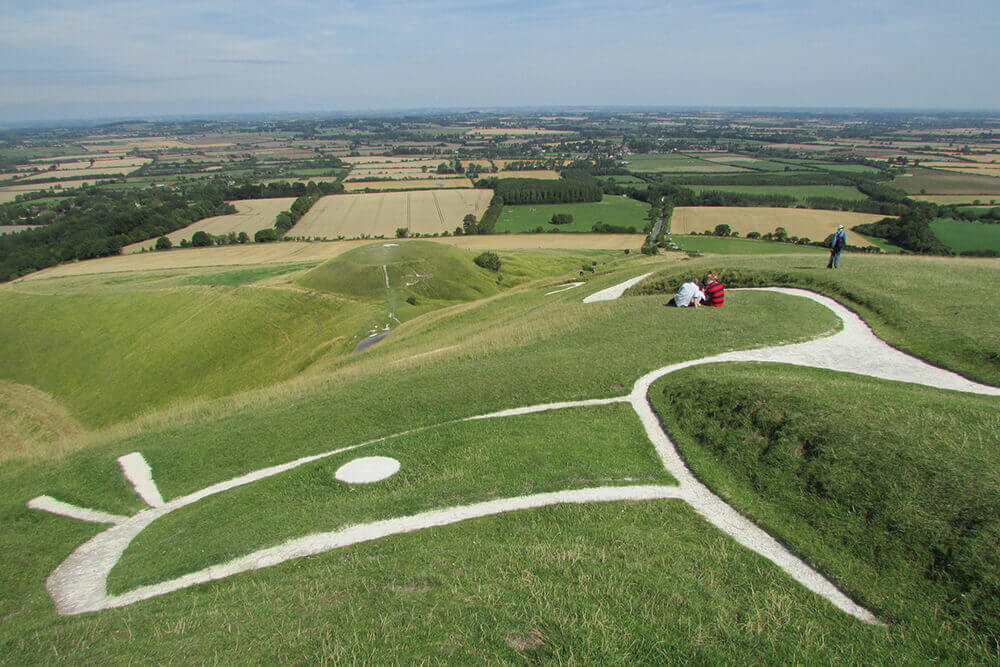
The Uffington White Horse by Glen Bowman
Not all of Britain’s hill figures – a collection of sixteen white horses, two men, a lion, and a variety of regimental badges and other odds and ends carved on to the chalky surfaces of hillsides stretching from Yorkshire to the south coast – are as puzzling. In many cases the giant hand responsible for the geological graffiti is well known and comparatively recent.
Wiltshire is the county for white horses. Of the fourteen white horses known to have existed in the county, eight are still visible. Despite most of the figures being of great age, many are relatively new. The Devizes White Horse in Wiltshire was the last to be created in 1999 to celebrate the forthcoming third millennium, whereas the White Horse of Uffington just over the border in Oxfordshire, is the oldest of them all, thought to date back at least 2,000 years.
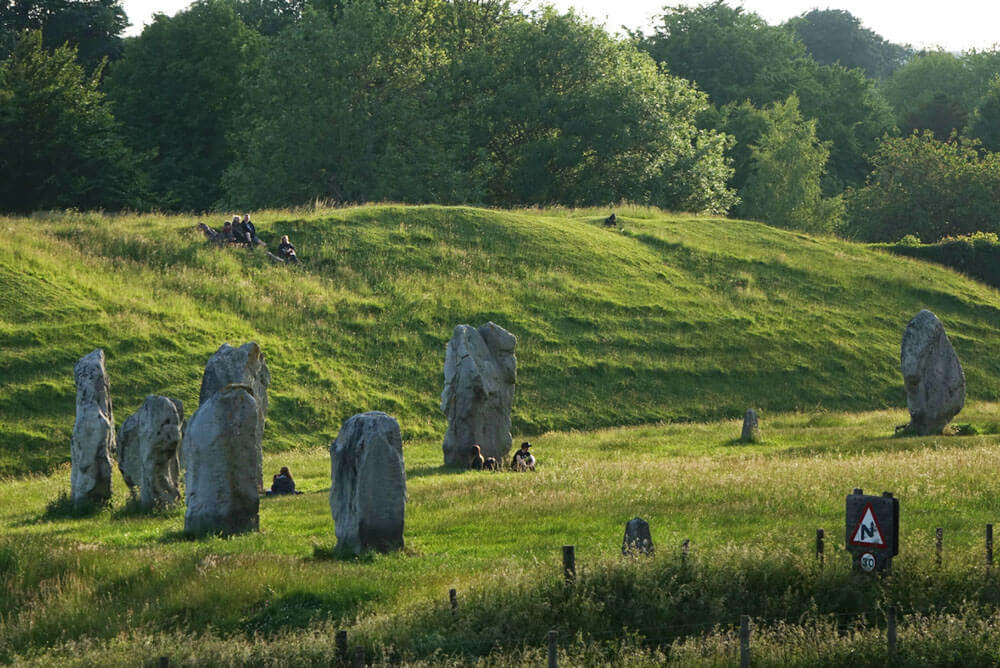
Avebury Stone Circle © National Trust/Mike Robinson
Wiltshire has another mystery in the shape of Stonehenge: the most famous prehistoric monument in Europe. The stone circle is at least 4,000 years old and appears to have some astronomical significance – but beyond that even the experts are left guessing. Nearby Avebury Ring is somewhat battered and certainly less visited. But, measuring a mile across and with an entire village inside it, this stone circle is surely the country’s most impressive. It’s also got a pub, The Red Lion, which is said to be haunted – apparitions seen here include a woman named Florrie who pays particular attention to bearded customers.
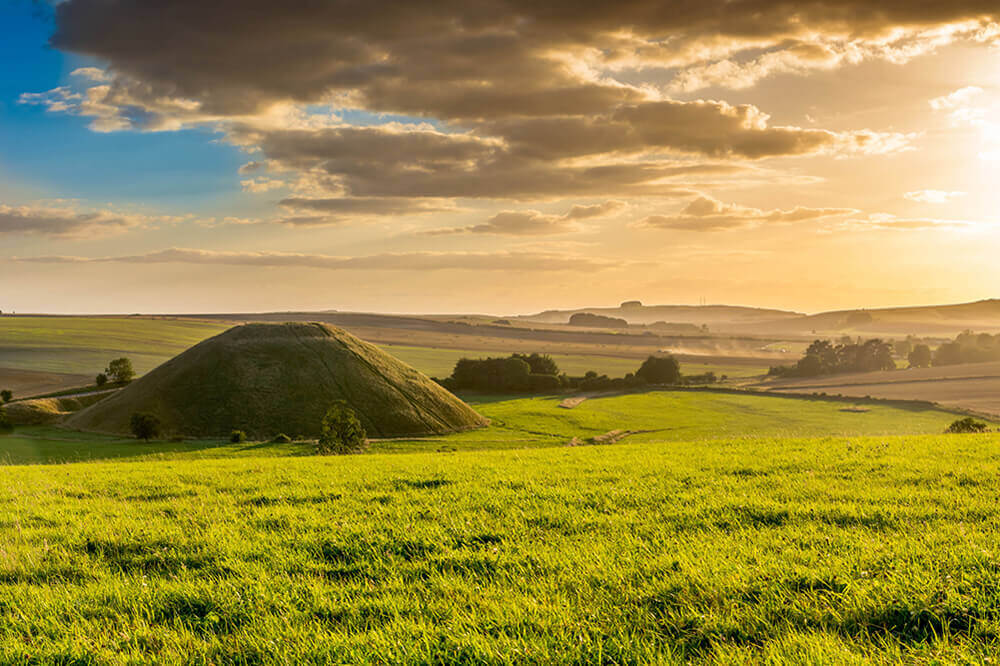
Silbury Hill by Ben Cremin
Near Avebury is the biggest manmade mound in Europe. About the size of a small Egyptian pyramid, Silbury Hill was built around 2400 BC, but with no signs of any burial inside, its purpose is still one of the great mysteries of prehistory. Whatever its origins, it is an extraordinary feat for such an early civilisation. It’s thought four million man hours were needed to pile up the half a million tonnes of earth, turf, stone and chalk.
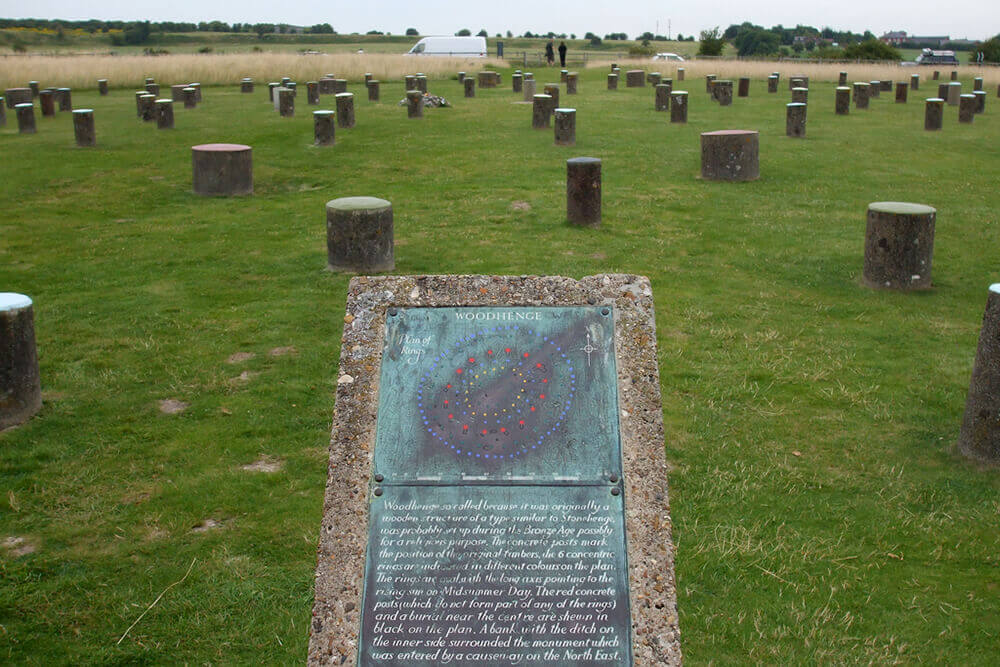
Woodhenge by Phelyan Sanjoin
Though not technically a stone circle, Woodhenge deserves a mention because of its mystery. It is located just two miles from Stonehenge and would have been just as visually striking in its day. Excavations revealed the skeletal remains of a child and a teenager at the site, either of whom may have been dedicatory sacrifices.
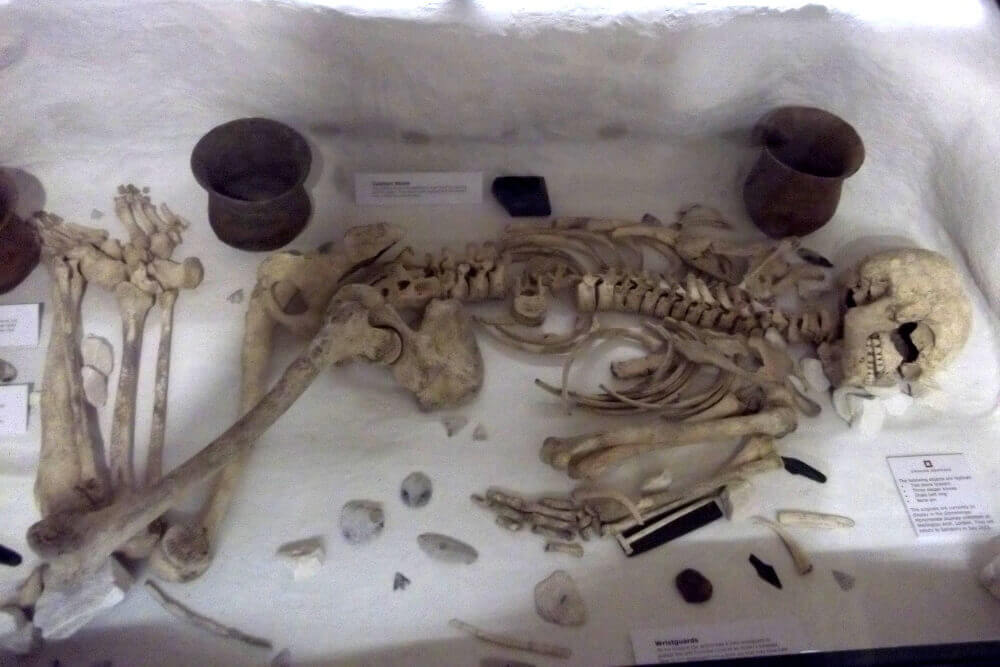
The Amesbury Archer at the Salisbury Museum by Pasicles
Find out more about mysterious England and the ritual landscape at Avebury’s Alexander Keiller Museum, and decide for yourself whether you think Silbury was actually created when the Devil couldn’t be bothered to carry a shovelful of earth all the way to Marlborough (where he really wanted to drop it)!
Other important museums that will give you an insight into the wider ritual landscape of Wiltshire are the Wiltshire Museum in Devizes and The Salisbury Museum, which is home to the Amesbury Archer, Stonehenge Archer and a remarkable collection of neolithic archaeological treasures.
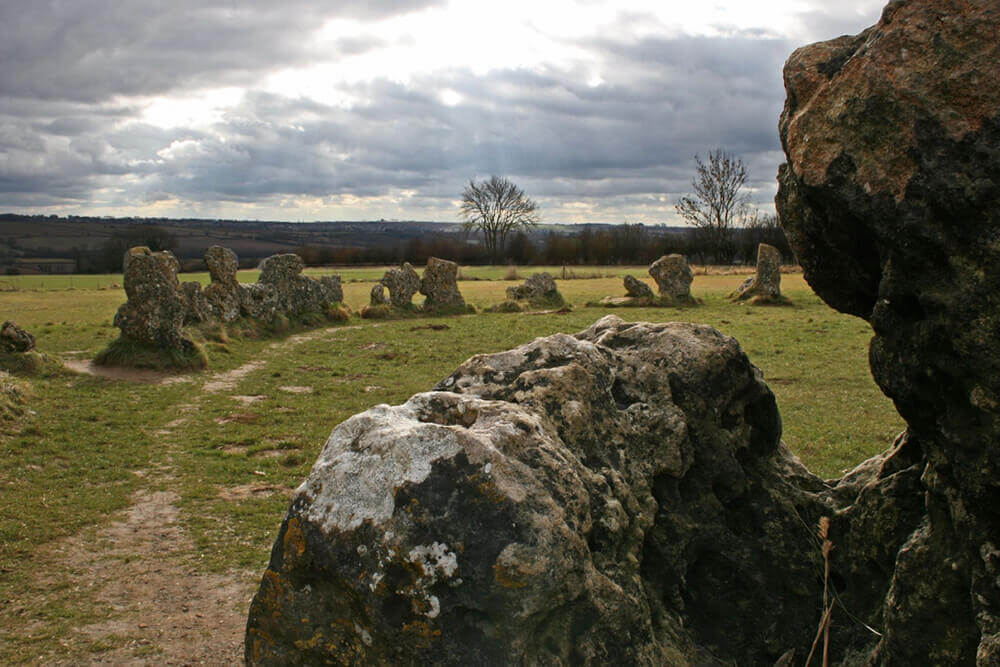
The Rollright Stones by Keith Williams
Other, less significant stone circles and individual standing stones are to be found all over the British Isles including the Rollright Stones in Oxfordshire, said to be the figures of a king and his courtiers turned to stone by a witch. The burial chamber stones here are known as the Whispering Knights.
Stanton Drew in Somerset is home to the second-largest collection of prehistoric megaliths in mysterious England and is made up of three interrelated stone circles. Nobody knows the meaning of the formation, although they appear to have been once part of a much larger site. Legend has it that a wedding party was held on a Sunday but the only musician who would play was the Devil in disguise. At the end of the dance the partygoers were turned to stone for their wickedness.
The sheer size of Trethevy Quoit in St Cleer, Cornwall, especially the precarious-looking capstone, can only make us marvel at the ingenuity and skill of the builders: just how did they do it?
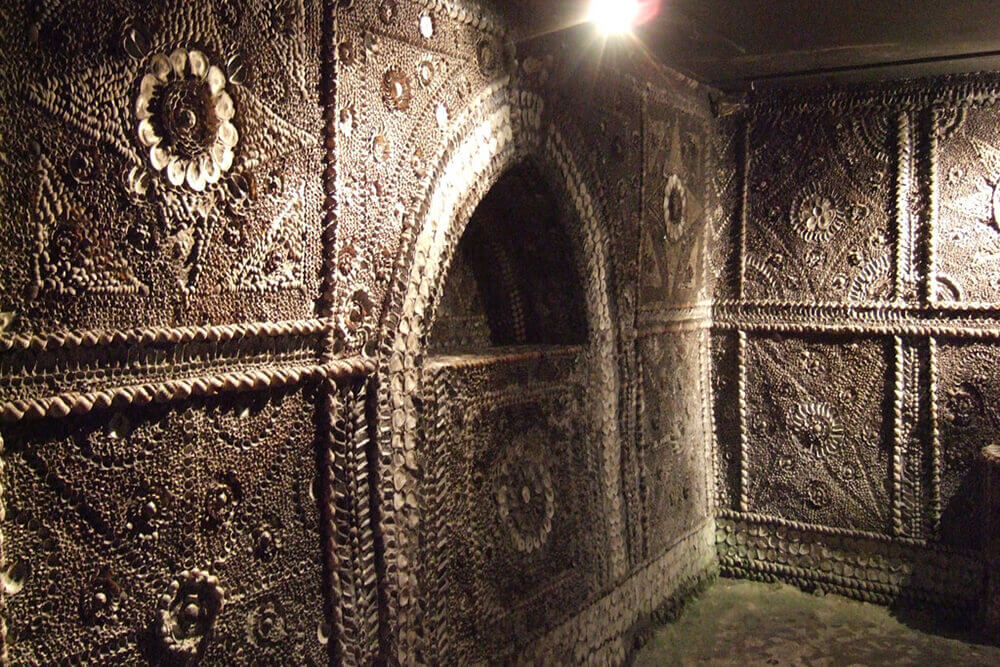
Margate Shell Grotto by Ben Sutherland
Another mysterious England puzzle can be admired at the Margate Shell Grotto in Kent, an extraordinary underground lair which was discovered in 1835. Here, the chalk walls of a mysterious set of passageways and chamber are covered with 4.6 million shells, covering more than 2,000 sq ft – arranged in elaborate mosaic images of gods, goddesses, trees and beautiful patterns. No one knows who built it, or when. The mystery is even more staggering when you consider how much unobserved toil went into this glittering cavern hidden beneath the much-loved resort. Some have suggested the grotto was used by early freemasons or as far back as the Knights Templar at the time of the Crusades; others that it was a local nobleman’s folly.
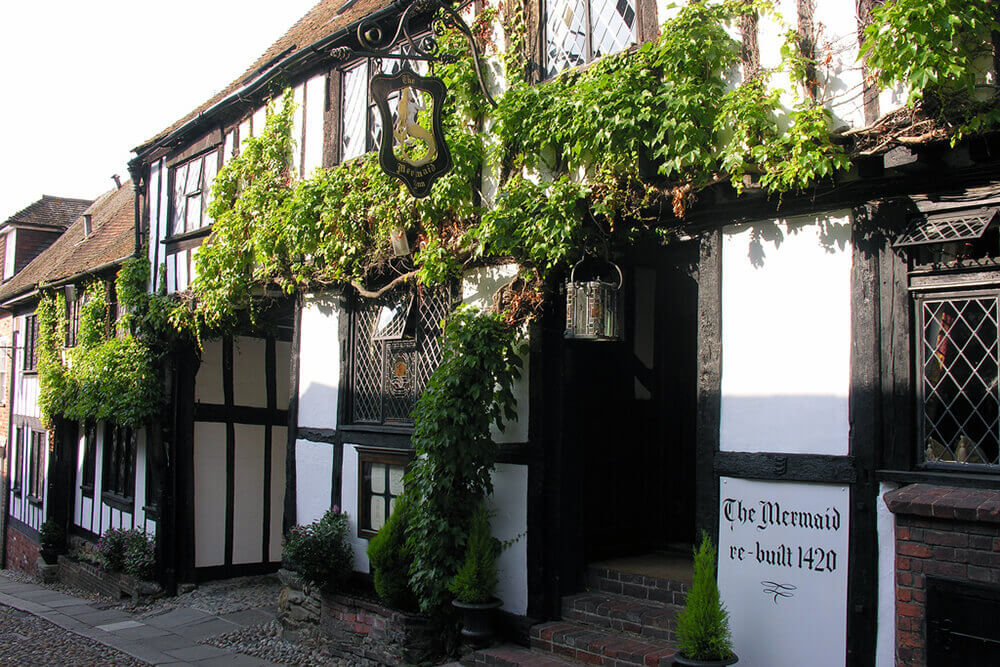
The Mermaid Inn, Rye by Phillip Capper
Many of Britain’s pubs and hotels claim an unexpected resident in the shape of a ghost. As well as the discerning ghost we’ve mentioned at The Red Lion in Avebury, The Black Horse, in the Kentish village of Pluckley, has a phantom figure which only likes beer-drinkers: glasses containing other beverages are pushed contemptuously aside by an unseen hand. Pluckley, with at least a dozen resident ghosts, holds the dubious title of Britain’s most haunted village. Watch out too for ghosts walking through walls and rocking the chairs at The Mermaid Inn in Rye, East Sussex as well as the ghost of the notorious smuggler Jack Travellis, who is said to haunt Jamaica Inn in Cornwall. It's all part of the mysterious England experience!
Published on Sunday 8th October 2023 by Linnie Clements


Follow us on social media